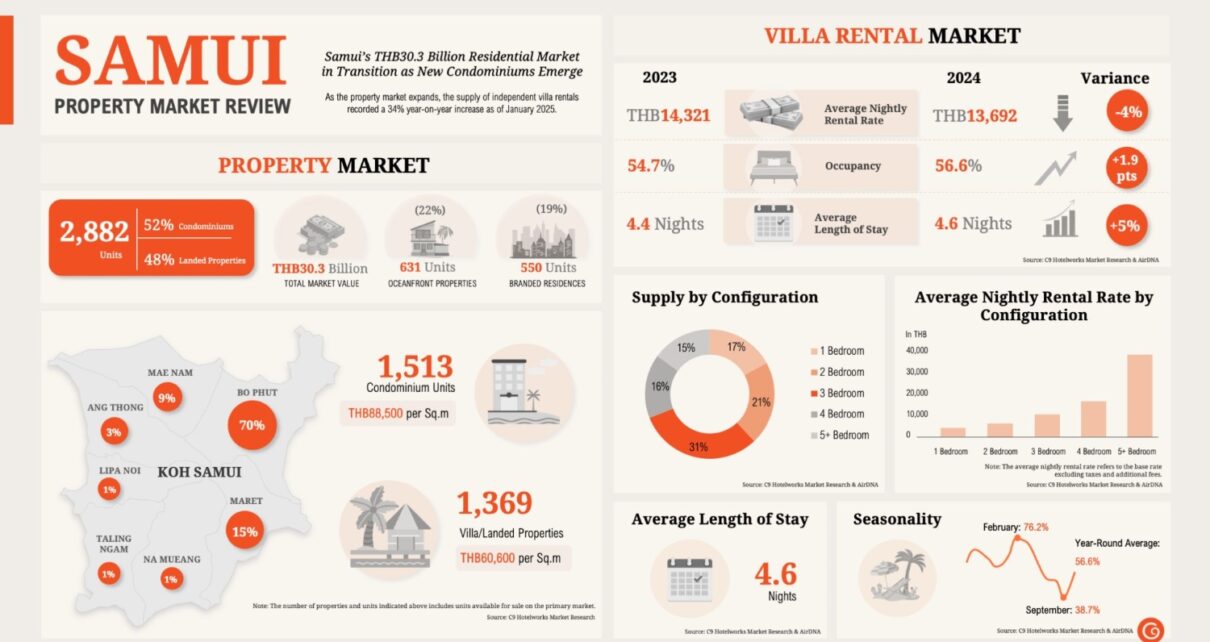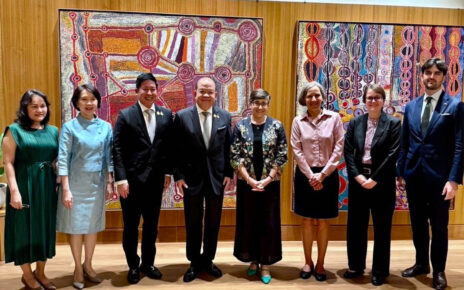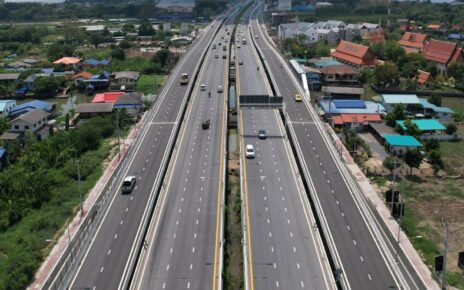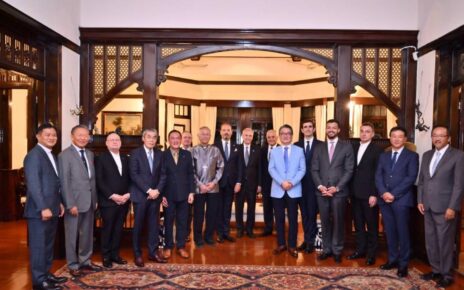Koh Samui’s residential property market is undergoing a pronounced transformation, shifting from a villa-centric model toward higher-density developments while expanding the overall supply. The island is embracing a broader mix of housing options, including resort-style condominiums, as investors and lifestyle buyers seek more affordable, manageable properties. Despite a growing inventory that has intensified competition and tempered some pricing, demand remains buoyant, underpinned by Samui’s enduring appeal as a luxury and privacy-forward destination. The evolving landscape is shaping opportunities for capital appreciation and rental yields, with large-scale condo projects signaling a new phase in the island’s real estate trajectory. This summary outlines the core dynamics driving Samui’s market, the current supply mix, pricing trends, submarket nuances, and what these shifts imply for investors and developers moving forward.
Market Dynamics Overview
The current market dynamics in Koh Samui reflect a deliberate pivot in strategy from traditional villa ownership toward high-density, resort-style condominium offerings, while the supply of independent villa rentals continues to rise. A defining trend, as captured by the latest market update, is the sharp uptick in villa rental inventory. By January 2025, the villa rental stock had grown by 34 percent year over year, contributing to intensified price competition across the island’s rental sector. This surge in supply has translated into softer average nightly rental rates, which declined by 11 percent year over year in the first quarter of 2025, landing at THB 13,012. Yet the same period also saw occupancy rise by 5.7 percentage points, reaching 71.5 percent, a clear indication that demand for luxury and privacy remains resilient despite greater competition.
Observing these patterns, market observers highlight Samui’s intrinsic strengths in its hotel and property markets relative to other Thai resort destinations. Bill Barnett, Managing Director of C9 Hotelworks, emphasizes that Samui benefits from a combination of supportive market fundamentals and relatively lower land costs compared to peers. This favorable cost structure creates an appealing platform for competitively priced luxury villas, many of which boast spectacular ocean views and premium amenities. The result is a market where price discipline, unit quality, and location can coexist with robust occupancy, especially in segments catering to high-spending travelers who value privacy and exclusive experiences.
Against this background, the residential development pipeline in Koh Samui reveals a clear strategic shift toward larger-scale, high-density condominium developments designed to diversify the island’s housing stock beyond the traditional villas. The market is increasingly oriented toward lifestyle-oriented buyers and investors seeking more affordable and manageable property options without sacrificing scope for ocean views, resort-like amenities, and strong rental appeal. Two prominent projects illustrate this trend: Anava Samui, planned with 564 units, and Wing Samui, set to deliver 533 units. These developments reflect a broader move to broaden the market’s appeal to a wider spectrum of buyers, including international purchasers and local investors who prefer the flexibility of condo ownership in a resort setting.
From a strategic standpoint, the shift toward high-density condo projects represents a pivot in Samui’s residential identity. It leverages the island’s competitive advantages—such as climate, lifestyle appeal, and connectivity—while addressing the growing demand for easier maintenance, shared amenities, and predictable management arrangements that condominium living can offer. This evolution signals a longer-term structural change in Samui’s housing supply, with implications for pricing dynamics, capital allocation, and the types of services developers must provide to attract and retain buyers.
The market’s broader implications extend to investment decision-making. For developers and investors, the emergence of large-scale condo projects opens access to a broader base of buyers, including lifestyle-focused purchasers and foreign investors seeking diversification within Southeast Asia’s resort-driven residential markets. It also raises questions about unit mix, price positioning, and the value proposition of resort-style living in a market that has historically leaned toward villas. In light of this, industry observers anticipate that the island will continue to experience a dynamic balance between rising condo supply and the evolving demand from both local and international buyers.
Residential Development Pipeline and Offerings
The Koh Samui residential landscape is expanding its spectrum beyond traditional stand-alone villas to embrace more vertical living options that promise easier management, enhanced amenities, and broader market appeal. The development pipeline highlights a deliberate diversification strategy aimed at attracting a broader mix of buyers while maintaining appeal to luxury-oriented investors who seek high-quality finishes, premium amenities, and strong rental performance.
Two notable entrants in this pivot are Anava Samui and Wing Samui, each introducing hundreds of units designed to appeal to lifestyle buyers and investors seeking more approachable entry points compared with larger villa estates. Anava Samui’s project footprint spans 564 units, while Wing Samui offers 533 units. The scale of these projects signals a clear intent to broaden Samui’s housing stock and to accommodate a growing appetite for condo-style living complemented by resort-like facilities. By offering a more compact, high-density living option, these developments aim to attract buyers who value affordability, ease of maintenance, and access to shared amenities, all within a setting that still emphasizes ocean views and premium residential experiences.
The introduction of large condo projects aligns with broader market shifts toward diversification, accessibility, and resilience in property investments. For lifestyle buyers, these developments present an opportunity to enjoy the aesthetic and experiential benefits of resort living without the full responsibilities that can accompany stand-alone villas. For investors, the condo format offers potential for more predictable management, scalable rental programs, and diversified exposure across a broader tenant base, including international visitors and long-term residents who prize a turnkey, amenity-rich living environment. The strategic emphasis on lifestyle-oriented features—such as wellness-oriented design, landscaped communal spaces, and integrated hospitality services—supports a value proposition that resonates with global buyers seeking value, convenience, and enduring appeal in a resort setting.
In parallel with these high-density condo projects, the market continues to lean on the enduring attractiveness of villas for high-net-worth buyers and families seeking privacy, space, and exclusive settings. While condo developments expand the market’s capacity to accommodate more buyers and investors, villas maintain a compelling value proposition for those who prioritize volume, scale, and the prestige of private ocean-view estates. The coexistence of both formats—condominiums and landed properties—reinforces Samui’s position as a diversified resort-driven market capable of catering to a wide range of preferences, investment horizons, and risk appetites. The ongoing balance between villa-led and condo-led demand will continue to shape pricing dynamics, occupancy patterns, and the overall attractiveness of Koh Samui as a luxury and lifestyle destination.
Current Supply Landscape and Submarket Trends
The current landscape reveals a market with a substantial and growing footprint, characterized by a mix of condominium units and landed villas across a total of 2,882 units and 117 projects. Of note, condominiums now account for a majority share of supply at 52 percent, underscoring their increasing dominance in the island’s new development palette. Villas or landed properties comprise the remaining 48 percent, a figure that still reflects a strong base for traditional buyers but indicates a gradual move away from a villa-only emphasis toward a balanced, mixed-market approach. This distribution highlights a fundamental structural shift in Koh Samui’s residential market, driven by investor interest in vertical living, evolving buyer preferences, and the desire for more controllable, low-maintenance property options.
Geographically, the market’s geographic concentration is notable. A commanding 70 percent of the inventory is located in Bophut, the central submarket that encompasses Samui Airport and the popular Chaweng Beach area. This concentration points to the submarket’s centrality to tourism flow, accessibility, and the density of amenities that attract both short-term visitors and long-term residents. Following Bophut, the submarket distribution shows Maret at 15 percent, Mae Nam at 9 percent, and Ang Thong at 3 percent. The clustering in Bophut and the surrounding premier zones reflects the premium positioning of these areas, as well as their capacity to absorb higher-quality projects with strong rental potential and price stability.
From a pricing perspective, the market exhibits clear differences between condominium and landed properties. Condominiums command a median sale price of THB 88,500 per square meter, signaling robust demand for vertical living in the island’s most desirable submarkets. In contrast, landed properties carry a lower median price of THB 60,600 per square meter, illustrating a price advantage for buyers who prefer the landed lifestyle and potentially larger lot sizes. When considering typical unit sizes, a one-bedroom condominium in the 40–70 square meter range has a median price around THB 3.5 million, while two-bedroom units in the 80–110 square meter range carry a median price near THB 7.2 million. Villas, by comparison, remain distinctly premium, with three-bedroom villas in the 250–350 square meter range averaging THB 14.9 million.
The villa market itself remains dynamic and highly seasonal, with occupancy patterns that underscore the cyclical nature of Koh Samui’s tourism-driven rental segment. The 2025 landscape shows occupancy oscillating from a low of around 38.7 percent in September to a high of about 76.2 percent in February, reflecting the region’s peak travel periods. The typical length of stay for villa guests hovers in the four- to five-night range, indicating a stable, pattern-based guest behavior that operators can optimize around. Pricing pressures have emerged due to the influx of supply, yet the occupancy gains suggest that volume-based strategies may be yielding favorable outcomes for many operators who adeptly balance rate and occupancy. In the first quarter of 2025, the decline in average nightly rates to THB 13,012 occurred alongside rising occupancy, illustrating a market that is increasingly driven by operational efficiency and price optimization rather than price increases alone. The mixed outcomes—lower nightly rates but higher occupancy—signal a maturing market where profitability relies on effective revenue management, distribution, and targeted marketing to attract high-value guests seeking privacy and exclusivity.
Submarket Insights: Concentration, Demand, and Asset Mix
Within the overall supply framework, the Bophut submarket stands out as a focal point for boutique villas and high-end condo developments alike. The submarket’s appeal stems from its combination of elevated design, privacy, and proximity to flagship attractions such as Fisherman’s Village, which continues to attract both international visitors and domestic travelers seeking a refined coastal experience. New luxury villas in Bophut are tapping into wellness-focused living and contemporary tropical aesthetics, reinforcing the submarket’s position as a magnet for lifestyle-oriented buyers who value a curated, quality-driven environment. This submarket’s continued strength is indicative of broader demand for premium lifestyles that combine aesthetics, seclusion, and access to vibrant local scenes.
The market’s value concentration—85 percent of Samui’s total market value focused in the submarkets of Bophut, Maret, and Mae Nam—underscores both the desirability and the maturity of these areas. The dominance of these submarkets signals a premium tier in Koh Samui’s residential landscape, where demand is strongest for properties offering oceanfront access, premium views, and branded or highly regarded developments. Within this framework, oceanfront properties account for 631 units of the total supply, while branded residences account for 550 units. These figures reflect a growing interest in premium, lifestyle-oriented investments that combine tangible asset attributes with experiential advantages. The presence of branded residences reinforces the perception of Koh Samui as a destination where luxury living and brand prestige intersect, attracting buyers who value formal recognition and a curated living experience.
In terms of configuration, market pricing scales with property size and type. Two-bedroom villas, typically ranging from 150 to 250 square meters, carry prices around THB 12.2 million, illustrating that even mid-sized villas command substantial value in the market. Four-bedroom villas, spanning 400 to 500 square meters, can exceed THB 28.9 million, highlighting the significant premium associated with larger, more expansive properties that offer additional living space and outdoor amenities. On the condominium side, affordability and lifestyle amenities continue to be pivotal selling points, with developers targeting a mix of foreign buyers and urban Thai investors who seek a balanced combination of price, location, and quality. The market’s dual-track nature—premium villas and high-quality condos—creates a diversified landscape that can accommodate a spectrum of investment profiles while sustaining demand across different price points and lifestyle preferences.
Competitive Villa Rental Market
Koh Samui’s villa rental market, as of 2025, comprises a substantial portfolio of 3,055 properties primarily operated by third-party management companies. These properties typically serve dual roles: personal holiday homes and income-generating investments. The distribution of unit types shows two- and three-bedroom villas dominating the market, comprising 21 percent and 31 percent of the supply respectively, while larger villas with four or more bedrooms account for 31 percent, illustrating a strong tilt toward accommodating extended families and large groups.
The villa rental segment is notably seasonal, with demand peaking during the island’s high season and tapering in off-peak periods. Occupancy ranges from a low around 38.7 percent in September to a high near 76.2 percent in February, highlighting a pronounced seasonality that operators must navigate through strategic pricing, promotional activity, and dynamic channel management. The typical guest stay length remains in the four-to-five-night range, suggesting a steady cadence of mid-length bookings that operators can optimize through targeted marketing and price architecture.
Pricing dynamics in the villa sector reflect the impact of rising supply. Even as average nightly rates have declined, the market continues to attract high-spending travelers who prioritize privacy and exclusivity. The observed rate decline to THB 13,012 in Q1 2025, coupled with improving occupancy, indicates a shift toward a volume-driven strategy for many operators. This approach emphasizes occupancy optimization, distribution efficiency, and operational excellence rather than pursuing aggressive rate hikes. The resulting trade-off suggests a maturing market where profitability increasingly hinges on the ability to manage costs, maximize occupancy, and deliver a compelling guest experience that justifies premium pricing for select properties.
The occupancy gains observed in 2025 imply that villa operators who optimize their revenue mix, maintain high-quality service standards, and deploy sophisticated pricing strategies are likely to benefit from a more stable revenue stream. As supply continues to rise, property owners and management teams may differentiate themselves through enhanced guest experiences, differentiated service packages, and value-added offerings such as wellness-oriented amenities, private experiences, and curated local collaborations. This segment’s development trajectory points to ongoing sophistication in pricing strategies, distribution partnerships, and brand positioning, with profitability increasingly dependent on a nuanced combination of rate financing, occupancy management, and guest value propositions.
Submarket Focus: Bophut and Boutique Villa Demand
Bophut stands out as a particularly active submarket within Koh Samui’s villa rental ecosystem. Its appeal lies in the fusion of boutique villa design, privacy, and proximity to key attractions like Fisherman’s Village, which remains a magnet for both wellness-focused living and contemporary tropical aesthetics. The submarket’s boutique villa projects are tapping into a rising consumer appetite for wellness-oriented living, where the interplay of design, privacy, and lifestyle amenities resonates with buyers seeking a modern, refined coastal experience. The influx of new luxury villas in Bophut underscores the area’s magnetism for lifestyle-oriented buyers who place a premium on aesthetics, tranquility, and access to cultural and recreational opportunities.
This submarket’s growth underscores the broader trend of demand concentration in areas that combine premium design with lifestyle-oriented offerings. The market’s trajectory indicates that Bophut will continue to attract high-value buyers and investors who appreciate the value proposition of boutique living, which blends exclusivity with proximity to vibrant hubs and coastal landscapes. As developers continue to respond to this demand, Bophut is likely to see ongoing evolution in villa design, amenities, and service delivery, reinforcing its status as a premier destination for luxury and wellness-focused living on Koh Samui.
Market Value Distribution and Configuration
From a geographic perspective, the Koh Samui market exhibits a pronounced concentration of value within a few submarkets, most notably Bophut, Maret, and Mae Nam. Collectively, these submarkets account for about 85 percent of the island’s market value, signaling a high degree of development maturity and buyer interest concentrated in premium coastal corridors and hinterland settings that offer strong access to beaches, dining, and leisure facilities. This concentration emphasizes the desirability of mature, well-connected areas with established infrastructure, a hallmark of marketplace leadership in resort-driven residential markets.
Within the inventory, oceanfront properties occupy a meaningful portion of the supply, with 631 units identified as oceanfront, underscoring the ongoing premium attached to coastal positioning and uninterrupted sea views. Branded residences, representing 550 units, reflect a growing interest in premium, lifestyle-oriented investments linked to established brands or developer-led branding strategies. The presence of branded residences aligns with broader consumer demand for globally recognizable living experiences and assurance of consistent service standards, which can translate into stronger rental appeal and perceived long-term value.
In terms of unit configuration and pricing, the market demonstrates a clear relationship between size and value. Two-bedroom villas in the 150–250 square meter range are priced around THB 12.2 million, while larger four-bedroom villas in the 400–500 square meter range can exceed THB 28.9 million. Condominiums continue to offer an accessible entry point to the market, with affordability and lifestyle amenities identified as critical selling points for both foreign buyers and urban Thai investors. The condo segment remains a strategic lever for developers seeking to attract international purchasers and local buyers with a preference for low-maintenance, amenity-rich living. This configuration-based price dynamic highlights the market’s multi-tiered nature, where different property types attract distinct buyer profiles and investment approaches, all contributing to a diversified and resilient market structure.
The market’s value distribution also underscores the ongoing appeal of Koh Samui as a destination where capital appreciation and rental income can be pursued through different property classes. The emphasis on affordable condo living for some investors contrasts with the enduring prestige and price resilience associated with larger, premium villas. This dual-track dynamic supports a broader range of investment strategies and risk tolerances, enabling a wider pool of buyers to participate in Samui’s evolving market while preserving opportunities for growth in both capital value and rental yields.
Outlook and Implications for Investors
Looking ahead, Koh Samui’s evolving real estate landscape presents a nuanced and multi-faceted image for investors and developers. The surge in supply—across both villa and condominium segments—creates downward pressure on pricing in the short term, particularly within the high-volume, rental-focused segments. However, this downward pressure is not unmitigated; rising demand, improved occupancy, and enhanced connectivity to regional and international markets are mitigating factors that support a more resilient outlook for the island’s real estate sector. In this context, the emergence of large-scale condo projects signals a structural shift in Samui’s residential positioning, making the island more accessible to a broader range of investors and second-home buyers. The strategic implication is that the island is transitioning toward a more volume-driven, diversified growth trajectory that can sustain a broader spectrum of investment opportunities.
From an investor’s perspective, differentiation, location, and value-added services will be critical in a more competitive market. As high-density condo developments rise, property developers must emphasize distinctive design, premium amenities, and smart management solutions that can elevate the guest or resident experience. In addition, the evolving mix of offerings will necessitate a nuanced approach to pricing, occupancy optimization, and distribution strategies across multiple channels to maximize returns. The market’s structural changes—coupled with Samui’s premium tourist positioning—suggest that the island is moving into a phase characterized by diversified growth, with opportunities across both capital appreciation and rental yield.
Infrastructure improvements and enhanced international connectivity are central to the upside thesis for Samui’s real estate market. As air links expand, reach improves, and travel times shorten, the island’s appeal to both domestic travelers and international investors grows stronger. This, in turn, supports a more stable occupancy outlook, higher-quality tourism demand, and a wider base of potential buyers who prioritize convenient access to Koh Samui’s beaches, dining, wellness offerings, and leisure attractions. The result is a more competitive market environment in which the right strategic approach—focused on differentiation, location, and value-added services—can unlock meaningful opportunities for developers and investors willing to align with evolving buyer preferences and market dynamics.
For developers, the message is clear: pursue projects that balance scale with quality, emphasize lifestyle and wellness components, and deliver a compelling value proposition across price bands. For investors, there is potential across both capital appreciation and rental yield, particularly in submarkets with strong absorption capacity, premium branding, and high-end amenities. The island’s broader positioning as a premium destination for resort-driven living and lifestyle-oriented investments supports continued interest from international buyers and institutional investors seeking diversification within Southeast Asia’s resort markets. While competition is intensifying, Samui’s unique combination of ocean views, lifestyle appeal, and improving connectivity maintains its appeal as a resilient, multi-faceted market with opportunities across value creation, income stability, and long-term growth.
As Koh Samui continues to evolve, market participants should monitor price movement patterns, occupancy trends, and the development cadence of major condo projects to gauge the pace of structural change. By aligning project attributes—such as location advantages, amenity ecosystems, and service standards—with investor expectations, the island can sustain a trajectory of growth that balances capital appreciation with compelling rental yields. The right strategic approach will allow Koh Samui to maintain its status as a premier resort-driven residential market within Southeast Asia, attracting a diverse set of buyers and investors who seek both lifestyle and financial returns in a dynamic, high-value destination.
Conclusion
Koh Samui’s residential market is undergoing a transformative shift driven by a growing appetite for high-density, resort-style condominiums alongside a resilient villa market. The supply surge is reshaping pricing dynamics, yet occupancy remains robust amid stronger connectivity and sustained demand from luxury-seeking travelers. The market’s evolution toward larger condo projects signals a new phase of diversified growth, enabling broader participation from lifestyle buyers and international investors while preserving the appeal of premium villas for select buyers. Submarket concentration in Bophut, Maret, and Mae Nam underscores a tiered market where oceanfront and branded residences reflect premium demand, and condo pricing alongside landed property values illustrates a nuanced, multi-tiered investment landscape. The interplay between rising supply, improving infrastructure, and evolving buyer preferences underpins a balanced, opportunity-rich outlook for developers and investors. As Koh Samui continues to enhance its global accessibility and lifestyle offerings, it remains a focal point for capital appreciation and rental yield within Southeast Asia’s resort-driven residential markets.



